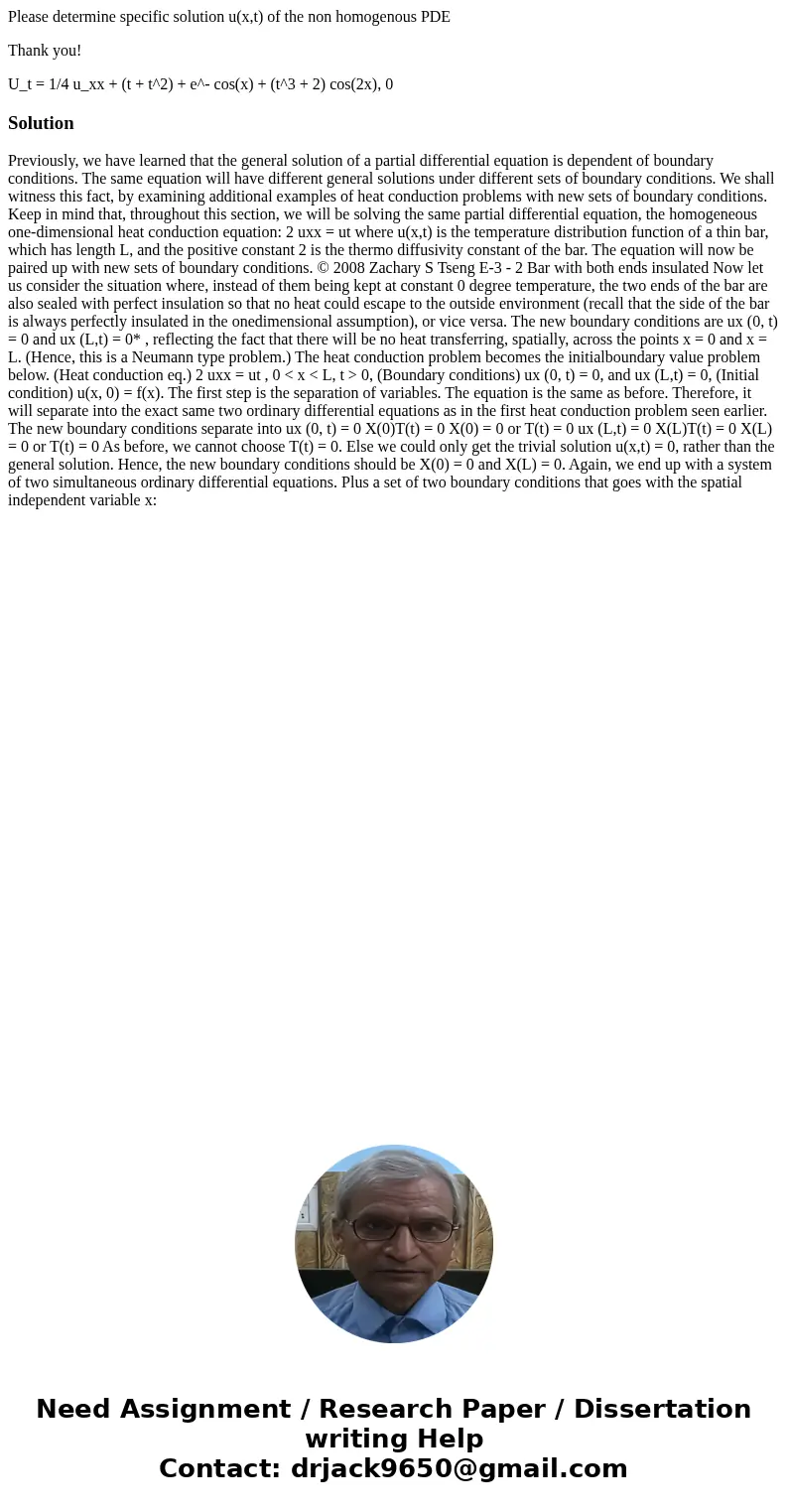Please determine specific solution uxt of the non homogenous
Please determine specific solution u(x,t) of the non homogenous PDE
Thank you!
U_t = 1/4 u_xx + (t + t^2) + e^- cos(x) + (t^3 + 2) cos(2x), 0Solution
Previously, we have learned that the general solution of a partial differential equation is dependent of boundary conditions. The same equation will have different general solutions under different sets of boundary conditions. We shall witness this fact, by examining additional examples of heat conduction problems with new sets of boundary conditions. Keep in mind that, throughout this section, we will be solving the same partial differential equation, the homogeneous one-dimensional heat conduction equation: 2 uxx = ut where u(x,t) is the temperature distribution function of a thin bar, which has length L, and the positive constant 2 is the thermo diffusivity constant of the bar. The equation will now be paired up with new sets of boundary conditions. © 2008 Zachary S Tseng E-3 - 2 Bar with both ends insulated Now let us consider the situation where, instead of them being kept at constant 0 degree temperature, the two ends of the bar are also sealed with perfect insulation so that no heat could escape to the outside environment (recall that the side of the bar is always perfectly insulated in the onedimensional assumption), or vice versa. The new boundary conditions are ux (0, t) = 0 and ux (L,t) = 0* , reflecting the fact that there will be no heat transferring, spatially, across the points x = 0 and x = L. (Hence, this is a Neumann type problem.) The heat conduction problem becomes the initialboundary value problem below. (Heat conduction eq.) 2 uxx = ut , 0 < x < L, t > 0, (Boundary conditions) ux (0, t) = 0, and ux (L,t) = 0, (Initial condition) u(x, 0) = f(x). The first step is the separation of variables. The equation is the same as before. Therefore, it will separate into the exact same two ordinary differential equations as in the first heat conduction problem seen earlier. The new boundary conditions separate into ux (0, t) = 0 X(0)T(t) = 0 X(0) = 0 or T(t) = 0 ux (L,t) = 0 X(L)T(t) = 0 X(L) = 0 or T(t) = 0 As before, we cannot choose T(t) = 0. Else we could only get the trivial solution u(x,t) = 0, rather than the general solution. Hence, the new boundary conditions should be X(0) = 0 and X(L) = 0. Again, we end up with a system of two simultaneous ordinary differential equations. Plus a set of two boundary conditions that goes with the spatial independent variable x:

 Homework Sourse
Homework Sourse